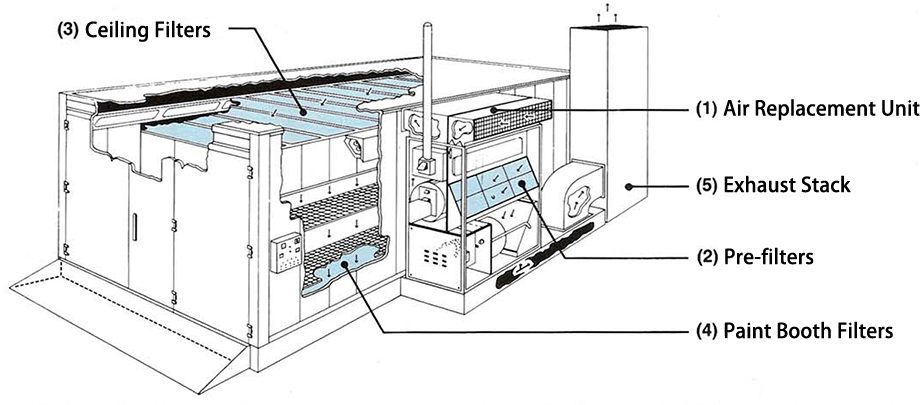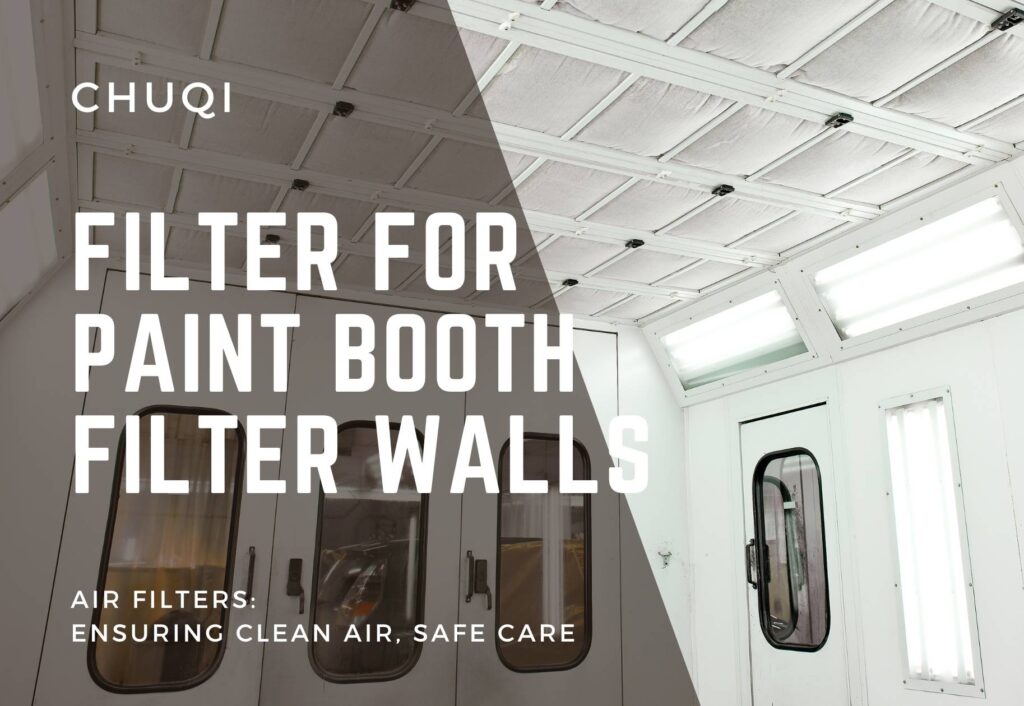You know, filter walls in paint booths are pretty much the unsung heroes of the whole setup. First off, they’re like the gatekeepers for clean air. Imagine this: you’re in the middle of a paint job, and without that filter wall, all those nasty fumes and dust particles are just floating around, ready to wreak havoc on your lungs and the environment. Not cool, right? Plus, you might even run into some legal trouble if those pollutants aren’t kept in check. So, yeah, filter walls? Super important.
But that’s not all. These bad boys also keep all the gunk out of the paint area, making sure that your paint sticks nice and even on whatever you’re working on. The result? A smooth, vibrant finish that not only looks great but also ups the quality of your work. Who doesn’t want that?
Picking the Right Filter Material
Now, let’s talk materials. The stuff you choose for your filter wall can make or break your paint job. You need fibers that are up to the task—something that can catch all those tiny particles in the air and keep them from messing up your paint job. Quality fibers can do wonders for keeping the spray area clean and ensuring that your paint job turns out just right.
When it comes to filtration materials, there are a few main players: ceiling filters, fiberglass floor filters, and intake filters. Each has its spot—the ceiling filter goes up top, the fiberglass floor filter goes down under the grid, and the intake filter handles the incoming air.
In some places, you might even need activated carbon filters. These are clutch when it comes to getting rid of odors, making them perfect for high-end car shops or anywhere that needs to keep the air super fresh. Activated carbon’s a beast at soaking up smells, making for a more pleasant work environment.
But here’s the deal: the filter material you pick really depends on your specific needs. If you’re running a big operation with tons of dust and fumes, you might need to go all out with both fiber and activated carbon filters to keep things in check. On the other hand, if you’ve got a smaller setup, just using fiber material might do the trick without breaking the bank.
How to Build Your Filtration Wall

Alright, so you’re ready to build this thing. Here’s what you need to do:
1. Measure and Plan
First up, you’ve got to measure and plan. You’ll want to get the exact dimensions of your paint booth so you know how big your filter wall needs to be. Think about the kind of work you’ll be doing, how often, and how much junk it’s going to produce. This will help you figure out just how powerful your filter wall needs to be. And don’t forget to leave enough room to easily swap out the filter materials later on—you don’t want to make maintenance a pain.
2. Install the Frame
Next, it’s time to install the frame. This is what’s going to hold everything together, so it needs to be solid. Go for something sturdy like metal or a tough synthetic material. Make sure the frame is level and plumb—grab a level and a straightedge to help with this. And when you’re putting it all together, make sure the connections are strong, whether you’re welding or using screws. Stability is key.
3. Laying Down the Filter Material
Alright, now comes the part where you actually lay down the filter material. This step is crucial, so take your time with it. You want to lay the material (whether it’s fiber, activated carbon, or a mix of both) nice and flat in the frame. No wrinkles, no gaps—just a smooth, even surface. This ensures that the air flows through the material evenly, giving you the best filtration possible.
If you’re using multiple layers, here’s a pro tip: start with the coarse layers and work your way to the finer ones. This helps to catch the big particles first, making the whole system more efficient. Once everything’s in place, double-check the edges. Make sure the material is snug against the frame, and if anything looks loose, fix it up right away.
4. Keeping Your Filter Wall in Top Shape
4.1 Regular Check-ups
To keep your filter wall working like a champ, regular check-ups are a must. I’d suggest giving it a good once-over every month or every few months, depending on how heavy-duty your setup is. When you’re inspecting, look out for any signs of blockage, damage, or warping in the filter material. Also, make sure the frame’s connections are still tight and that the whole structure is holding up well.
4.2 Cleaning the Filter Material
When it comes to cleaning, you’ve got to consider the type of filter material you’re dealing with. For fiber materials, a vacuum cleaner can do wonders—just gently suck up the dust and dirt from the surface. If you’re working with activated carbon, a good technique is to take it outside and give it a gentle tap to knock out any absorbed particles. But be careful—too much cleaning can wear down the material and mess with its filtering abilities.
4.3 Replacing Filter Materials
No filter lasts forever, so keep an eye on their lifespan. Generally, fiber materials need replacing every 2-3 months, while activated carbon might need a swap-out every 1-2 months. And when it’s time for a replacement, make sure you’re using the same type of material as the original. Trust me, sticking with what works is key to keeping your system running smoothly.

